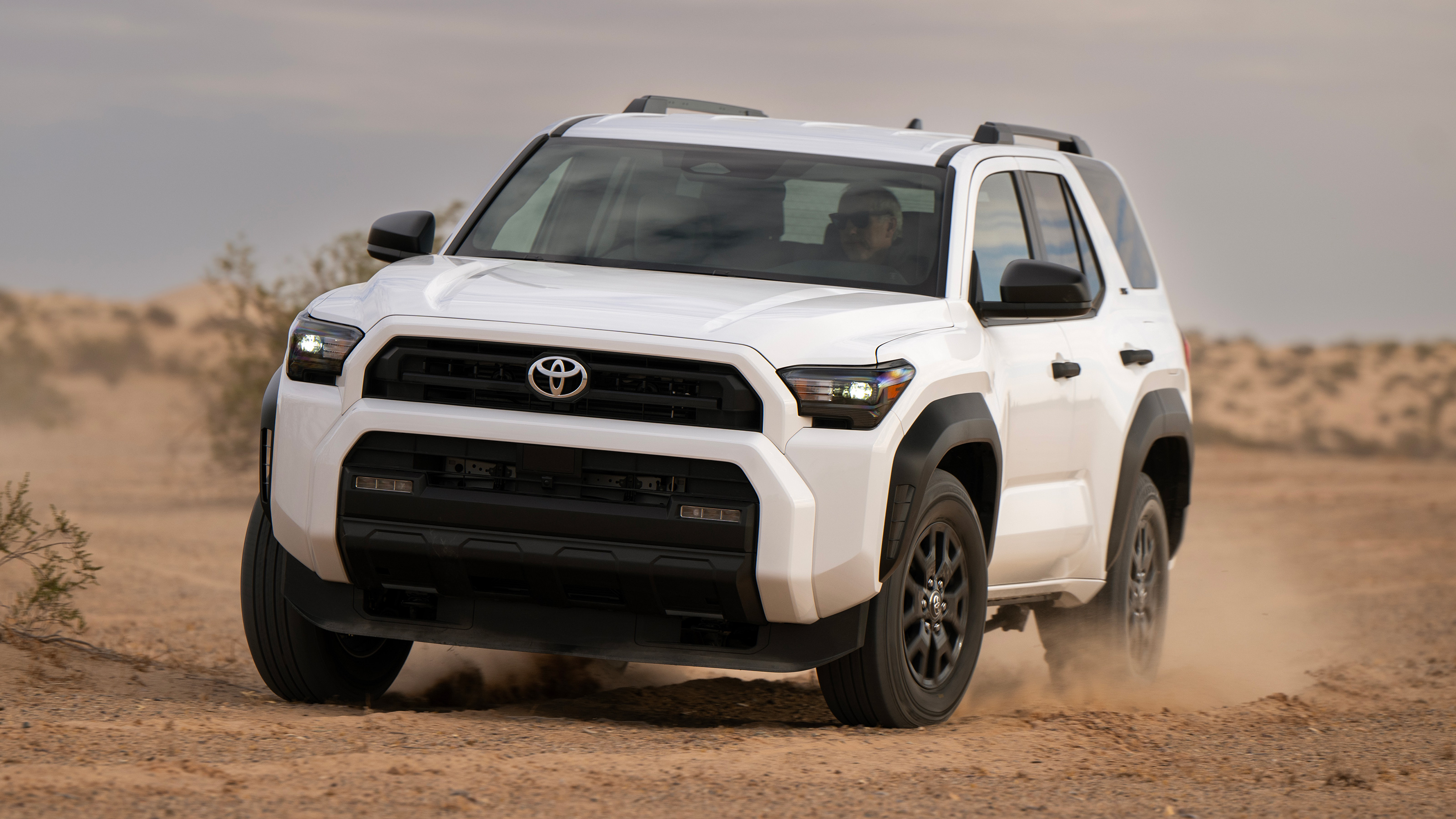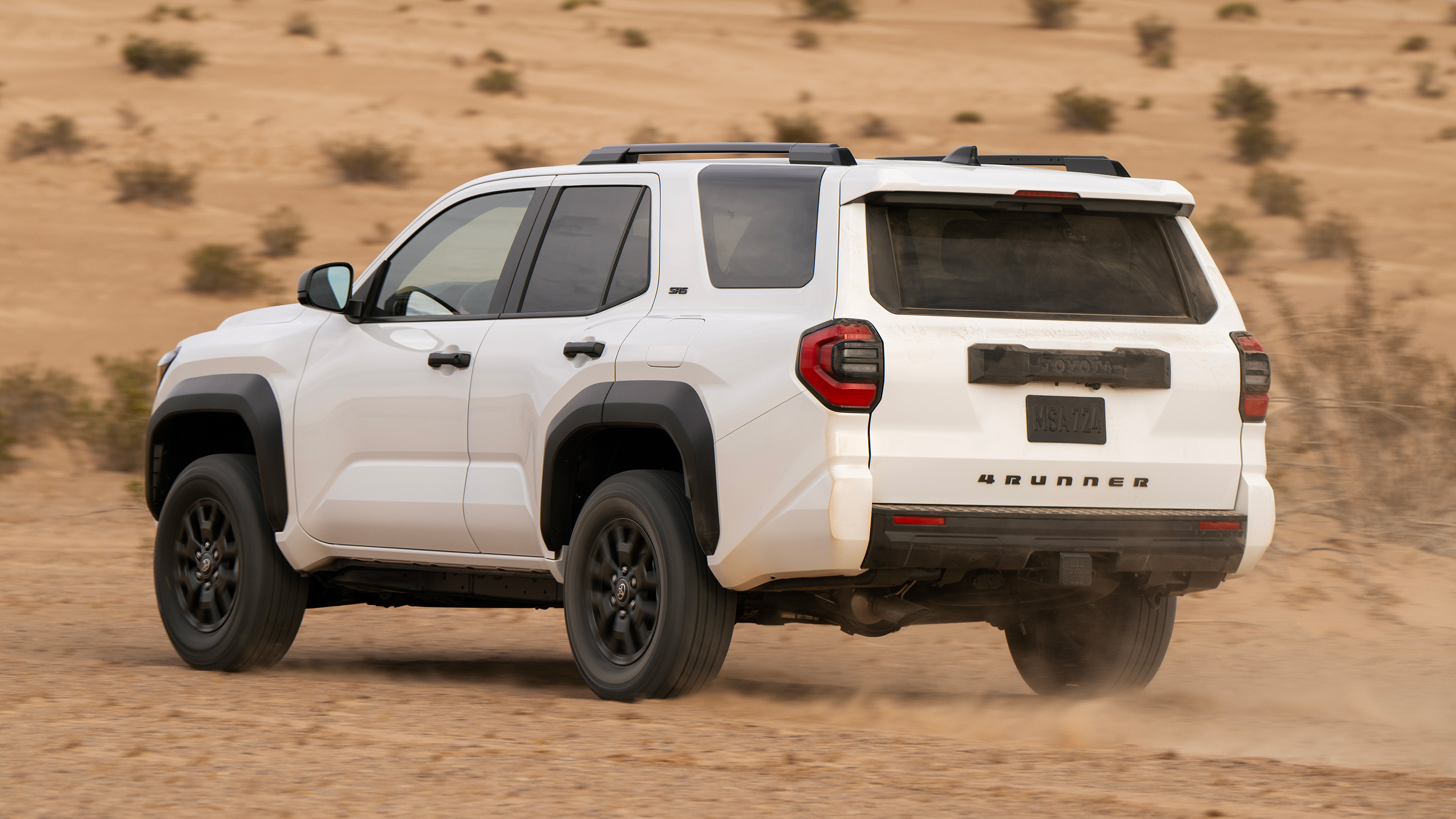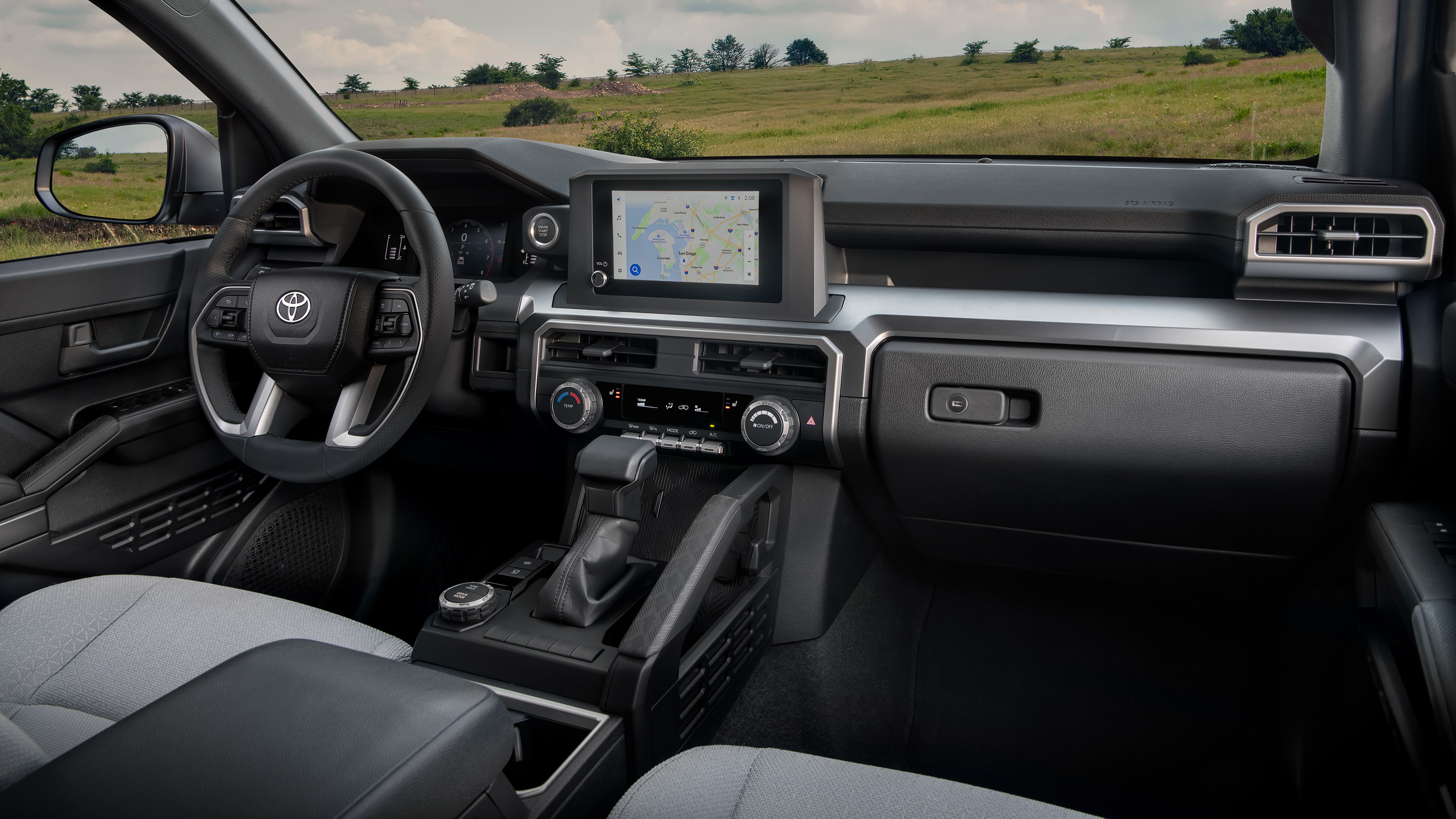
Toyota 4Runner (US) review
Driving
What is it like to drive?
Nobody’s really ever excited to drive the 4Runner on the road but the reality is that’s where it’ll spend most of its time. While it has that boxy body-on-frame feeling, it’s better composed than the last iteration, even in the new Trailhunter trim.
Speaking of, this one comes equipped with an exhaust snorkel from the factory, which ensures that the sounds of the hyperventilating turbochargers are pumped directly into the cabin from the passenger side window like an exasperated pug desperate to get your attention. Go with the Limited or Premium trim, and the adaptive suspension makes road trips even more bearable.
In terms of styling, it’s a great, meaty-looking facade, but this is let down by creaky door hinges and a generally hollow sensation to certain elements. Chalk it up to pre-production testers, but it was worth mentioning.
When it comes to the engine performance, the 2.4-liter turbo-four does an adequate job, but it’s constantly in a state of boost, which is frustrating on long drives and problematic for saving fuel when towing. Many of the issues are mitigated when it’s paired with the hybrid, and low-end power delivery gets a lift too, though the difference is hardly night-and-day.
Topping it off are mushy, wooden brakes that take their time halting the SUV from higher speeds, such as highway off-ramps.
How is it on the dirt?
As proficient as you’d expect, even in the lower trims. In a non-turbo 4WD setup, the 4Runner’s 317lb ft of torque is put to good use through the multi-terrain select functions, as the software won’t let the 4Runner put a foot wrong. Selecting the right transmission range and drive mode isn’t particularly clear from jump, but once you sort it out, it’s a breeze to utilize.
The hybrid engine brings more power and precious torque into the mix, but some hill climbs really put the squeeze on the transmission, even on inclines that should be a piece of cake.
Naturally, the TRD Pro is able to take much more abuse than the other versions. Along with the standard hardware, it has manually adjustable shocks for drivers to set dampers according to the terrain. This and the Trailhunter come with a stabilizer disconnect mechanism for increased articulation out in the wild.
The new Trailhunter trim matches most of what the TRD Pro offers, but it’s packaged to accommodate extended overlanding trips. It has a different shock setup, comes with an on-board air compressor, and includes a higher air intake.
Featured

Trending this week
- Car Review
BMW iX3






